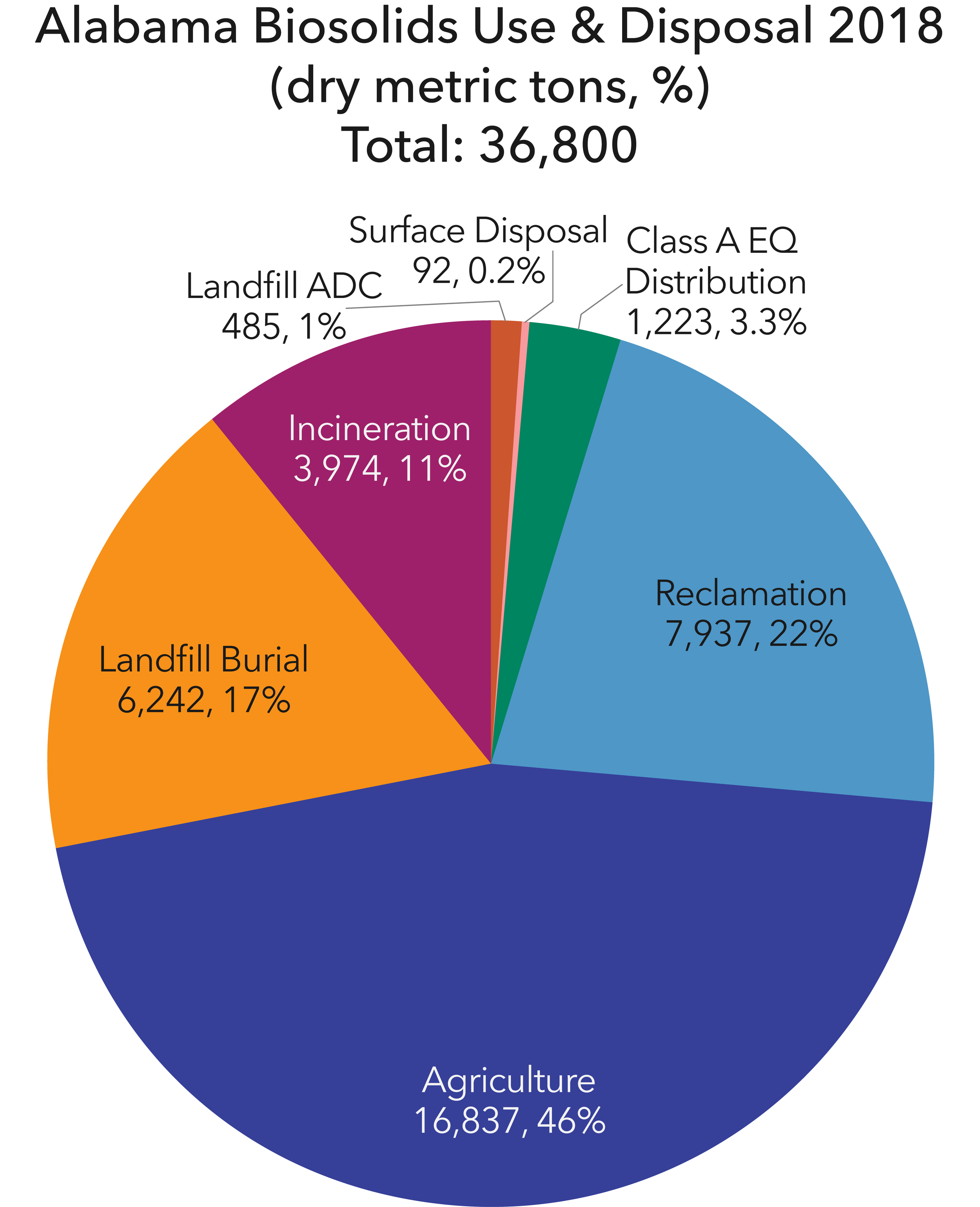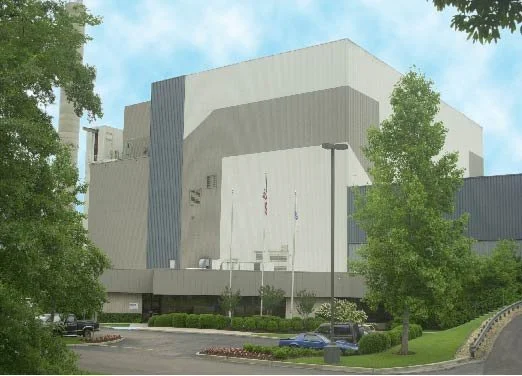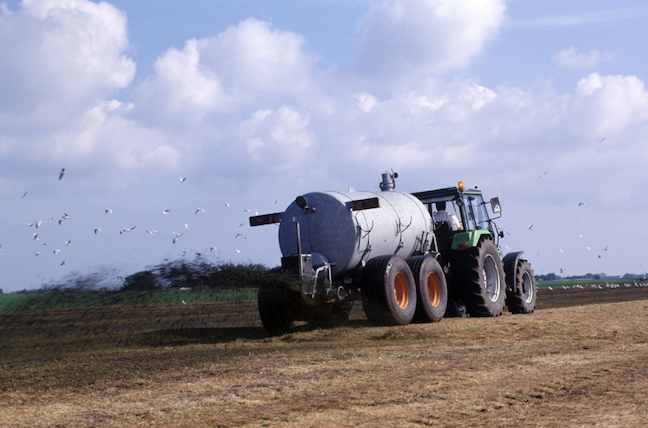State Data
Confidence in data for this state:
MODERATELY HIGH
2018 data unless noted.
Definitions
Terms used on this website and in data sets are defined & discussed here.
Huntsville’s waste-to-energy facility. Photo courtesy of Covanta.
Biosolids land application in Alabama. Photo used by permission, Alabama Cooperative Extension System.
State Statistics Dashboard
State Summary
● Most wastewater solids are land applied on farmland, with some (from the Birmingham/Jefferson County area) used for mine land reclamation. Huntsville solids are incinerated in a waste-to-energy system. The remaining solids are landfilled.
● The Alabama Department of Environmental Management (ADEM) oversees biosolids management, increasingly since April 2020, when new state rules came into effect. Twenty years ago, U.S. EPA Region 4 was entirely responsible for overseeing biosolids in AL. In the past decade, complaints about malodors and other nuisances, including regarding out-of-state biosolids being land applied or landfilled in AL, led to pressure on ADEM to impose additional restrictions, which now include nutrient management requirements and setbacks at land application sites.
● Septage regulations were also updated in 2020. Septage is regulated by the AL Department of Public Health and local health departments, which oversee the relatively rare instances of land application of septage. ADEM would only get involved if there were water quality impacts. It is assumed that most septage is disposed of at water resource recovery facilities (WRRFs). Alabama has been at the forefront of identifying public health concerns related to failed septic systems in some rural low-income communities.



